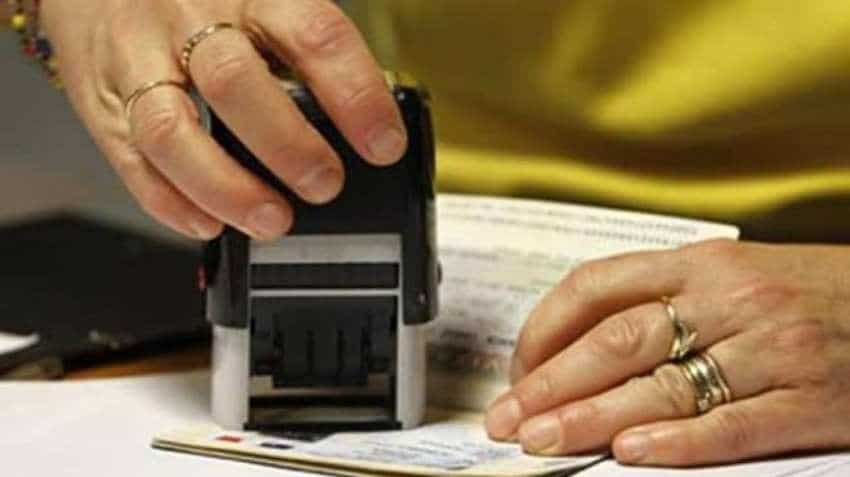H-1B visa: Unrealistic to expect softening of US stance, says Ganesh Natarajan
Today, there are three challenges facing the industry. The first is the inexorable shift to digital, leading to a completely different way global clients of the industry will deploy processes and technology to engage with customers and supply chain partners.

The information technology (IT) industry in India has come a long way from early beginnings to a $150-billion global leader. In this journey, many of us who have led companies in this industry have faced many hurdles in our key markets and have seen technology shifts that threatened our global delivery model. However, we have always come out stronger and given a strategic response that has benefited all our stakeholders at all times.
Today, there are three challenges facing the industry. The first is the inexorable shift to digital, leading to a completely different way global clients of the industry will deploy processes and technology to engage with customers and supply chain partners.
The second is the hectic pace of automation, both by manufacturing and services clients as robots in the physical world and robotic process automation in the services arena consume jobs all over the world and also in the IT and business process management (BPM) industry itself, threatening jobs like infrastructure and applications support, applications development and testing, which become easy targets for automation.
And last, but not the least, is the looming spectre of protectionism, with traditional markets like the US, Europe and even Africa looking out for local talent and creating barriers for free movement of professionals from India.
The hot topic of the day is US President Donald Trump's multiple pronouncements against the highly skilled visa programme and the issuance of H-1B visas, supported by top white house advisors and members of the US Congress and Senate.
The moves stem from President Trump's "America First" agenda which welcomes and encourages investments in the US while denouncing any moves to shift work offshore or replace American jobs with visa holding professionals. It does not help that Indian nationals continue to account for the overwhelming majority of H-1B and L-1 visas issued (74% in FY 2017).
With all the pressure on Indian firms, local employment is being increased and the number of visas sponsored by Indian firms continues to decline each year with Nasscom recording a 55% decline in new H-1B petitions for initial employment from FY 2014 levels of 18,709 to 8,468 in FY2017.
The response of the Indian industry has always been on three dimensions. The first is the fact that India's IT sector is a "net creator" of jobs in the US, directly supporting over 4 lakh jobs in the US. In the last four years alone, American jobs supported by Indian companies grew by 10% annually compared to annual US job growth of less than 2%.
The second is the help given to thousands of the US businesses to improve their operations, create new products and services and gain market share through superior global competitiveness. The participation of Indian H-1B and green card holders in cutting edge research has made the US the dominant tech nation for decades, an edge that the US can ill afford to lose.
The third and possibly the most compelling argument is that the US Department of Labor estimates that there will be 2.4 million unfilled jobs in science, technology, engineering and mathematics (STEM) by 2018, with half of these in IT related roles, and while Indian companies have stepped in to fill the gap, the annual number of IT specialists from India working on temporary visas is about 0.009% of the 158-million strong US workforce.
Watch this Zee Business video
It would, of course, be unrealistic to expect any softening of the US stance for the immediate future. The industry needs to protect its revenues by embracing new models that are driven by IP creation, local hiring and more intense offshore capability building. With digital transformation becoming the need of the day for all clients, building multi-stakeholder platforms and re-skilling the existing work force on all shores in artificial intelligence, machine learning, data sciences and user experience design will be the best way to protect and enhance both revenues and industry reputation globally. The industry will make it happen.
By: Ganesh Natarajan
(The writer is chairman of 5F World and an investor in the digital technologies ecosystem in India)
Source: DNA Money
Get Latest Business News, Stock Market Updates and Videos; Check your tax outgo through Income Tax Calculator and save money through our Personal Finance coverage. Check Business Breaking News Live on Zee Business Twitter and Facebook. Subscribe on YouTube.
RECOMMENDED STORIES
01:47 PM IST






 H-1B visa draw: Second lottery round for applicants to be conducted this year, says US immigration service - check eligibility
H-1B visa draw: Second lottery round for applicants to be conducted this year, says US immigration service - check eligibility H1-B visa suspension to have Rs 1,200-cr impact on Indian IT firms: Crisil
H1-B visa suspension to have Rs 1,200-cr impact on Indian IT firms: Crisil New red flags inside Trump H1B crackdown: Top US immigration attorney
New red flags inside Trump H1B crackdown: Top US immigration attorney We hope US' non-immigration visa review will consider benefits of H1-B visa: FS
We hope US' non-immigration visa review will consider benefits of H1-B visa: FS Techies Alert! US reaches H-1B visa cap for 2020
Techies Alert! US reaches H-1B visa cap for 2020